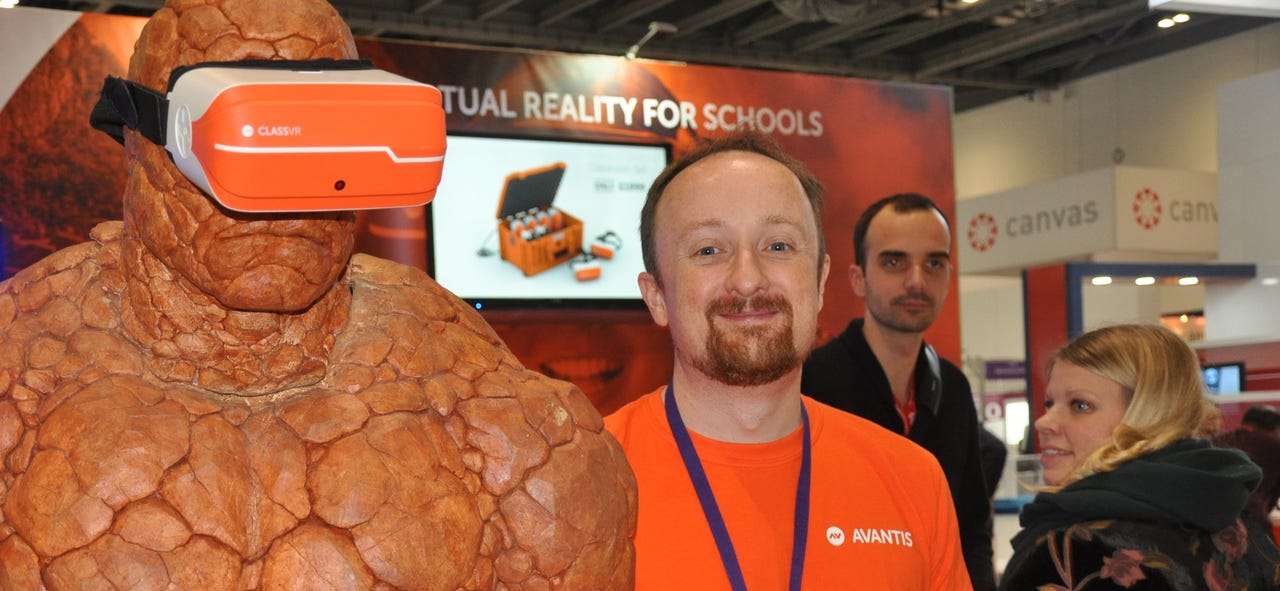UK company launches 'classroom VR' with packs of 8 cheap headsets


Dr Rupert Rawnsley at BETT 2017 with some Thing from Fantastic Four wearing a ClassVR headset
"Real" virtual reality systems could play a major part in the future of education and training, just as 2D simulations do today. The obvious drawback is the cost of a sophisticated headset and the gaming-level PC needed to run it. However, Avantis, a British company, is offering a baby step forward in the form of ClassVR, a cheap headset that runs Google Android.
At last week's BETT (British Education, Training and Technology) exhibition in London, Avantis launched ClassVR systems comprising eight headsets in a custom storage and charging box for £1,999. As Avantis's technical director, Dr Rupert Rawnsley, wryly observed: that's less than he'd just paid for a new MacBook Pro.
The ClassVR headset has a 5.5-inch screen with a resolution of 2560 x 1440 pixels, a quad-core ARM processor, 2GB of memory, and 16GB of storage. It also includes a front-facing camera, microphone, stereo speakers and ClassConnect software.
An 8-pack of ClassVR headsets
Rawnsley said the idea was "to bring VR into every classroom in every school, not for full-time use but as a topic starter". For example, students could use ClassVR headsets to view 360-degree panoramas of all sorts of subjects from ancient temples to the surface of Mars, or examine 3D animations. (I skipped the one of a beating heart.) It also enables virtual travel and field trips.
There's no location-based system, so the headset is essentially a viewer. However, each ClassVR has an 8-megapixel camera, an electronic compass, a 9-axis gyroscope, Wi-Fi, and Bluetooth, so there are connections to build on.
Avantis already supplies Android tablets to schools, and ClassVR uses the same management software as its LearnPads.
"We aim to take the friction out of the experience for the teacher," said Rawnsley. There's also a web-based content management system so schools can install Android apps and VR apps.
"We've focused on the curriculum, letting the content dictate what we do technically," Rawnsley added. "We've produced 500 lesson plan notes to start with. The strategy is: Adopt, adapt, and innovate to bring your own content."
There are many other ways for teachers and trainers to start exploring VR, including Google Cardboard and Samsung's Gear VR, and they all have their attractions. What ClassVR does is package VR to make it accessible, manageable, and reasonably affordable.
Jaguar unveils first electric vehicle using HTC Vive VR headsets: